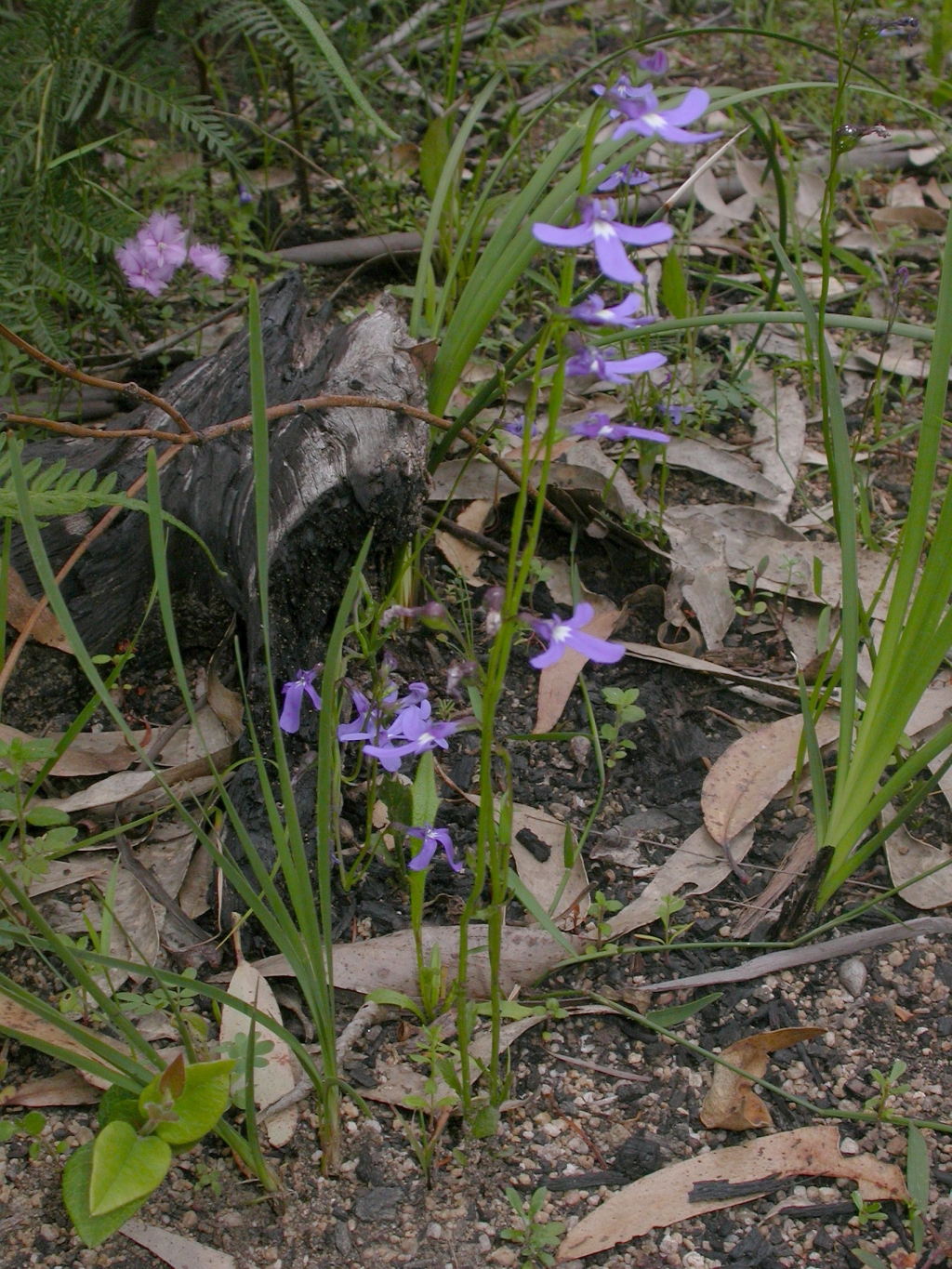Lobelia dentata
Cav.Erect, glabrous to sparsely papillose annual, 10–60 cm high; stems solitary or few from near base. Leaves oblanceolate to obovate-spathulate, c. 6–35 mm long, 2–12 mm wide, toothed (but reducing and c. entire up stem); petiole indistinct. Flowers bisexual, in terminal and sometimes axillary 4–13-flowered racemes; pedicels 3–35(–45) mm long, glabrous or rarely papillose. Calyx-lobes 1.8–5 mm long, entire; corolla 2-lipped, (10–)13–28 mm long, usually dark blue, rarely white; upper 2 lobes short, strongly recurved, lower 3 lobes spreading, oblong to oblanceolate, the central lobe longest, (5–)8–15 mm long, 1.2–5 mm wide, lateral lobes falcate, tube 5–9(–15) mm long, split almost to base, glabrous to minutely pubescent internally towards base; filaments 3.5–8 mm long, anther tube c. 1.7–2.5 mm long. Capsule broadly and obliquely obovoid, c. 5–8 mm long; seeds c. ellipsoid, 0.3–0.45 mm long, brown, very faintly ridged to almost smooth. Flowers most of year.
EGL, EGU. Also NSW. Occurs predominantly in open-forest on sandy or rocky substrates. It often appears abundantly after fires or other forms of disturbance.
Similar to Lobelia rhombifolia (see key) and L. simplicicaulis (see notes under that species).
Albrecht, D.E.; Walsh, N.G. (1999). Campanulaceae. In: Walsh, N.G.; Entwisle, T.J., Flora of Victoria Vol. 4, Cornaceae to Asteraceae, pp. 553–553. Inkata Press, Melbourne.
 Spinning
Spinning
